“Mini cars,” Henry Ford II infamously once said, equal “Mini profits.” Ironically, what he’d have termed a “mini” car turned out to be the Blue Oval’s most important product of the 1970s: the Mk1 Ford Fiesta.
The quote happened on May 13, 1971 and it came at the end of a short dialogue with reporters after Ford’s annual shareholder’s meeting. HF II was referencing the Pinto and meant to express considerable concern over competing with new Japanese imports in the U.S., but the quote took on a life of its own.
At the time, however, Ford was knee-deep in debating whether to build what became the first Fiesta, its smallest-ever product up to that time. Just a few weeks before HF II’s comment at the shareholder meeting Fiat had unleashed the 127, a car which, like its sibling, the Autobianchi A112, Ford of Europe had no direct answer for. Months later came the Renault R5, another front-drive supermini Ford could not compete with.
The arrival and immediate popularity of these cars soon convinced Ford’s European arm (formed in 1967 as a merger of its British and German subsidiaries), to go forward. What became the Fiesta had been on the back burner since 1969, but the rise of the Italian and French superminis, and finally the Honda Civic, provided the final push.
The Fiesta would be Ford of Europe’s most important car of the 1970s and one which ushered in modern front-drive arrangements on both sides of the Atlantic for the Blue Oval. What was not expected, however, was that the Fiesta would become a U.S. model. As it happened, circumstances collided to make a unique version for the USA, though not without a fair amount of corporate Sturm und Drang on the way.
Ford’s Disadvantage
In a way, it’s not surprising that at least two of the cars that influenced the decision to build the Fiesta came from Italy. The country had high fuel costs, small streets, and a consumer base that favored cheap, light cars. Fiat knew exactly what Italians wanted and beyond knowing the audience, it also had high import tariffs defending its home turf from foreign interlopers. It was that protectionism that led to, BMC’s famous tie-up with local manufacturer Innocenti.
Ford’s only competition for Italian small cars were the base models of Anglias and Escorts, slow and skinflinty, and expensive compared to peppier, more exciting Fiats. Conditions were not exactly the same in Spain and France, but there too Ford’s conventional small cars were at a disadvantage.
As early as 1968-69, Ford wanted to improve in Southern European markets in a way that could not be achieved through the cost-conscious but conventional model pioneered by the Mk1 Cortina in 1961-62. A similar program of carefully-costed components and conventional engineering had created the Escort in 1968, one of the first Ford-of-Europe products.
However, as Innocenti did well with the Mini and Fiat graduated to front-drive with the Autobianchi A112 and Fiat 128 in 1969, it became clear that the only way to build a truly competitive very small car was to go front-drive. Rear-drive cars just weren’t space or energy efficient enough.
But Ford execs were wary of front-wheel drive for a number of reasons.
The Cortina program had examined the cost of BMC’s mini and found it to be far too expensive to build profitably. While BMC did eventually tame the costs of the Mini and build them in such volume that the car was profitable, Ford made far more money on traditional cars like the Cortina even if they weren’t as competitive among very small cars. Then there was the legacy of “Project Cardinal.”
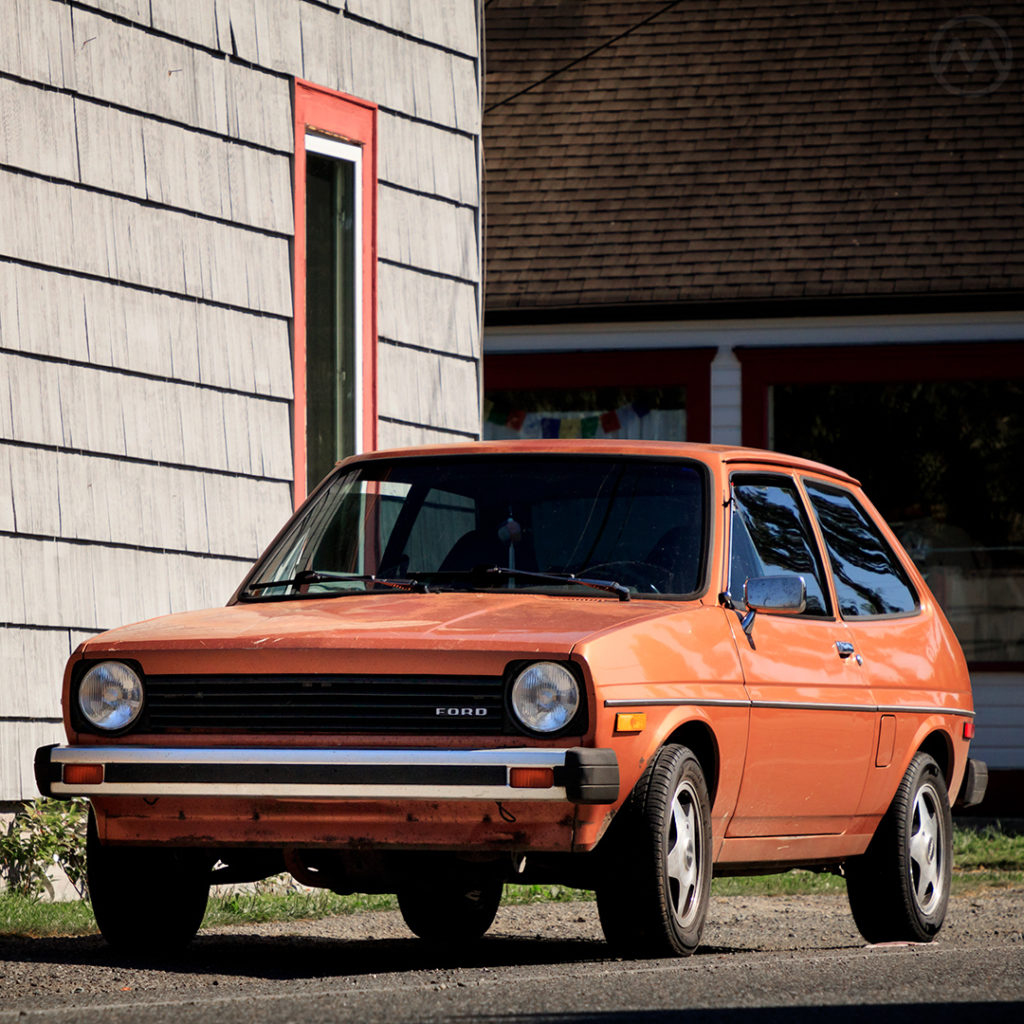
“Cardinal” had originally been a front-drive subcompact meant to slot in below the Falcon in America.
When it became clear that Ford of Germany was developing a similar project, Cologne’s engineers were forced to work on the development of a joint project intended to sell in both markets, only to be built in the larger dimensions of the U.S. version. When Dearborn abandoned the proposed American model, Cologne was left stuck with the oversized-for-Europe Ford Taunus P4, which was almost the same size as the nicer rear-drive Taunus 17M and never sold well.
Internal corporate forces, mostly in the area of finance, also balked at the idea of building an even smaller car than the Escort because they felt would cannibalize its sales. But Ford of England’s Ralph Peters undertook a market study for such a car. After a year and a half of observation, he posited that the company could probably move 250-300,000 such cars a year in places where Ford was weak, like Italy and Spain.
Spain was far more protectionist than Italy, and under General Franco’s highly restrictive regime, only Renault and SEAT (then a subsidiary of Fiat) were major players due to punishing local content rules.
The Rise Of The Supermini
The Mini, the A112, the Fiat 128, and the Simca 1100 all pointed to a front-drive, small-car future, but still, even as late as January of 1972, the dominant forces at the Blue Oval didn’t want to build such a car. But two key people were convinced: product development man Hal Sperlich and his boss, Lee Iacocca.
The BMC ADO16 cars, the 128 and Simca were slightly larger cars that the Escort could compete against, but only just. The A112 was a niche model that sold mostly in Italy and France. The Mini was still expensive to make. But once the big-selling Fiat 127 arrived, it became clear that Ford would have to respond somehow. The 127 was followed quickly by the R5, Peugeot 104, and (more worryingly) the Honda Civic; the only one of these new cars offered in the U.S. from the start.
Fiat’s new “supermini” bowed only three weeks month before HF II’s famous shareholder meeting quote. In the spring of 1972, Iacocca and Sperlich got the go-ahead on developing the car.
Bobcat to Fiesta
What became the Fiesta was initially labeled “project Bobcat” in October of 1972, though it was not related to the Mercury-ized version of the Pinto. It included several early proposals including the “Cheetah,” a cut-down Escort created in the same school of thought as the AMC Gremlin. But it was clear pretty quickly that the car had to be small, front-drive, and a hatchback.
The issue of building it to cost was a major factor. Not only were Ford’s bean counters reluctant to spend hundreds of millions of dollars on the development and tooling, they also had to be convinced that it could actually be built to a cost. The “Bobcat” had to be at least $100 per car cheaper to make than the European Escort. To meet that goal, Ford used various different production locations to minimize the cost of parts and assembly, and re-used components where it could.
The biggest development for production happened when Henry Ford II brought an attractive Christmas gift to the Franco regime. That same December, Ford proposed that in exchange for loosening some of the local content rules, Ford would build a sprawling new factory at Almussafes, in Valencia.
In time, “Ford Valencia” would become the company’s largest car factory outside of the United States.
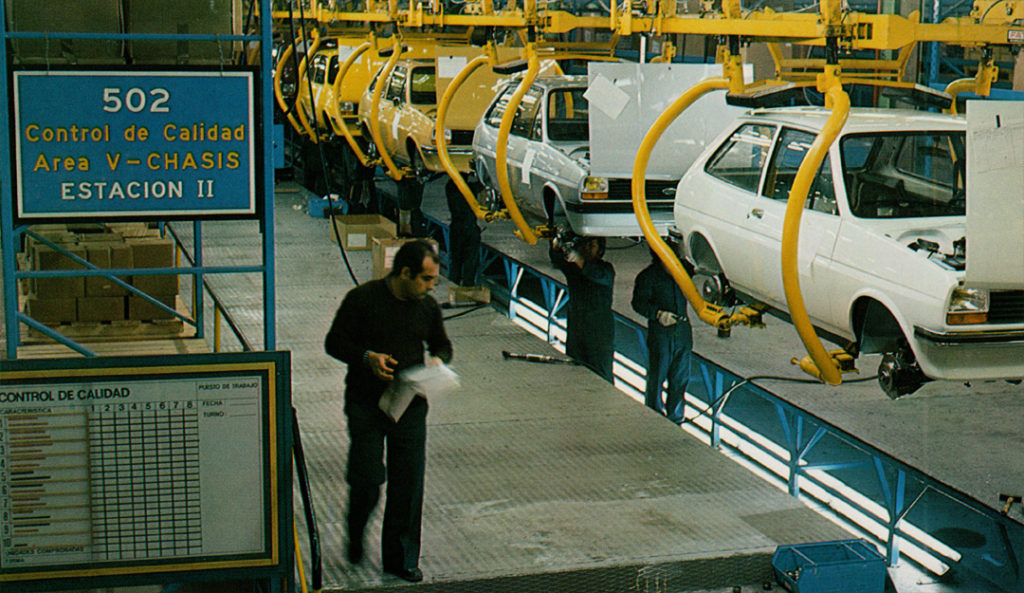
The Franco regime was so enthusiastic about it that groundbreaking began only a few months later. Despite that enthusiasm, Ford was still required to export the vast majority of the cars it would build in Spain, and to keep its market penetration within certain limits in Spain itself. Nevertheless, it provided jobs for Spain and low-cost labor for Ford.
The factory was set up by Ford of Germany production man Hanns Brand, who had recently set up another key location for the Fiesta: Saarlouis in Germany.
By the time the factory opened in October of 1976 however, circumstances had changed. Franco died in November of 1975 after restoring the Spanish Monarchy. That set up a transition to democratic rule which occurred over the next few years. The plant was actually inaugurated by King Juan Carlos I. This change heralded a transition to much freer markets, which Ford was now well-situated to take advantage of.
Under the hood, the Fiesta used a reworked three-main-bearing version of the old “Kent” four, now called (unsurprisingly) “Valencia.” Not too long after the car debuted, the older Kent crossflow was also added, though the two engines used many different parts. All Fiestas would have a four-speed manual.
Up front, the design used familiar MacPherson struts, with a beam axle out back with a panhard rod. It was designed to be cheap, but happily proved to be a very capable handler.
To keep costs down, the new car would come only as a 3-door hatch. This would prove to be one of the only limits to the Fiesta’s popularity. In time Fiat, Renault, and Honda offered more doors on the 127, R5, and Civic but the basic Fiesta shape would remain the same until 1989.
The exterior of the car was developed in a competition between studios. At first, when Ford was testing consumer clinics, it used rather generic looks for it, at least one of which, penned under Don DeLaRossa’s direction, looked rather like the later Seat 1200 Sport (itself a version of the 1970 NSU Nergal concept car).
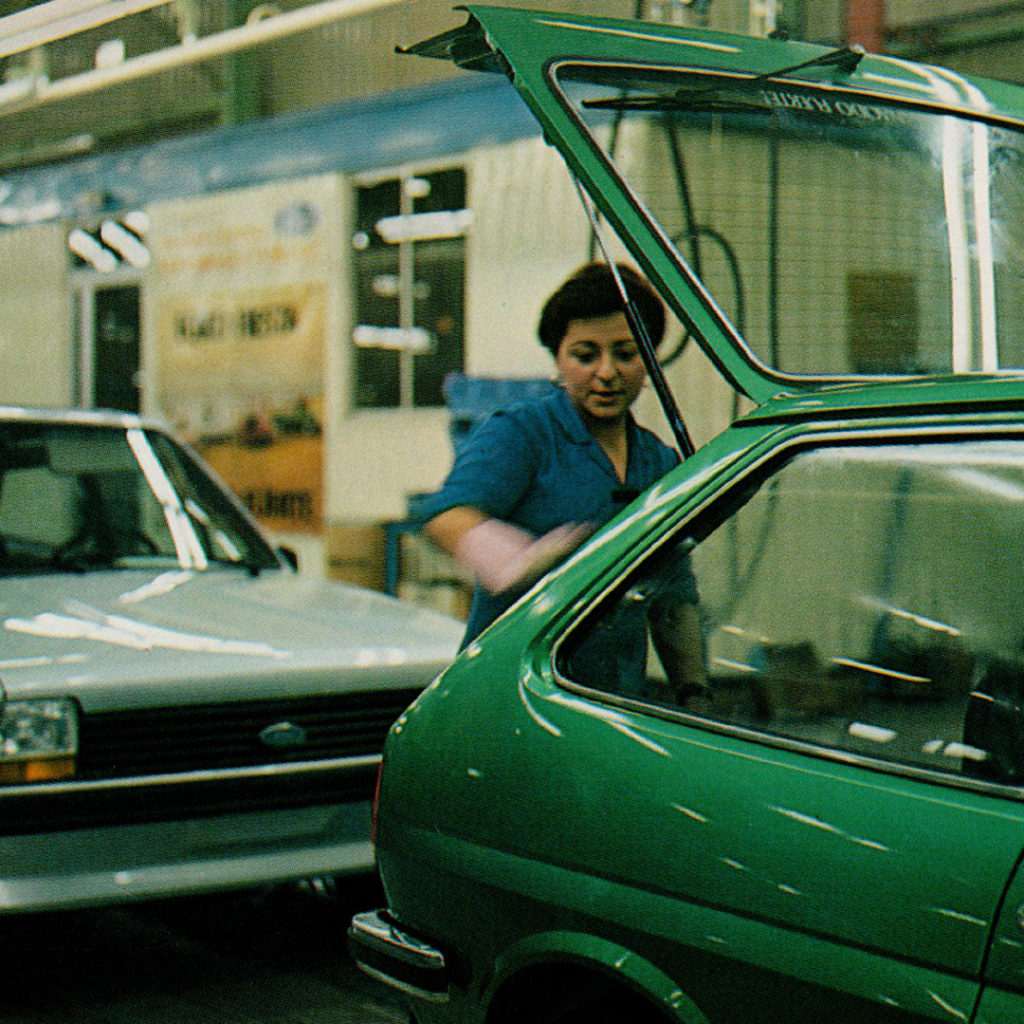
When real planning got underway, the styling was done in the typical Iacocca-influenced Ford fashion – three studios competed against each other. One was Dunton in the U.K., led by future Ford style boss Jack Telnack. The second was Ford’s German studio led by Uwe Bahnsen. The third was Ghia, and it was here where the winning proposal came from, penned by Tom Tjaarda of Pantera and Fiat 124 Spider fame.
Ford had owned Ghia since 1970 and the former Carrozzeria had become a full-on member of the Ford family, donating its name to dressy models but also contributing to many styling successes.
The Fiesta still faced internal opposition as late as the fall of 1973, but when the OPEC embargo began, doubters were silenced. It helped that ex-Ford Australia boss Bill Bourke took on the finance reins in 1973 and had a broader view of the company’s global goals. Tjaarda’s exterior design was approved around the time gas lines were beginning to form that year, but it was still almost two more years of work to get the car into production at cost.
The Fiesta Arrives
The Fiesta name was chosen from a long list that included Bravo, Amigo, and Sierra (which would be used later), but Henry Ford II was a particular fan of alliteration. He personally persuaded GM to release the name (used on some Oldsmobile products) for use on the new car.
It was not only built in Spain and Germany but also eventually at Dagenham. Aiming for the heart of the market, to which it arrived late, Ford spared no effort in marketing the car against the VW Polo, R5, and 127, all of which had been in the market for a few years when Fiesta production began in the spring of 1976. It was not as fun as the 127 nor as smooth as the R5 but it was also better made in many respects.
How did Ford keep the cost low? By fitting some telltale cheap components and skimping out on certain features. The seats did not recline. Ventilation (without the optional flip-out ventipanes) was pitiful. The fittings were basic. Options were few. But as small, cheap cars went it was highly competent.
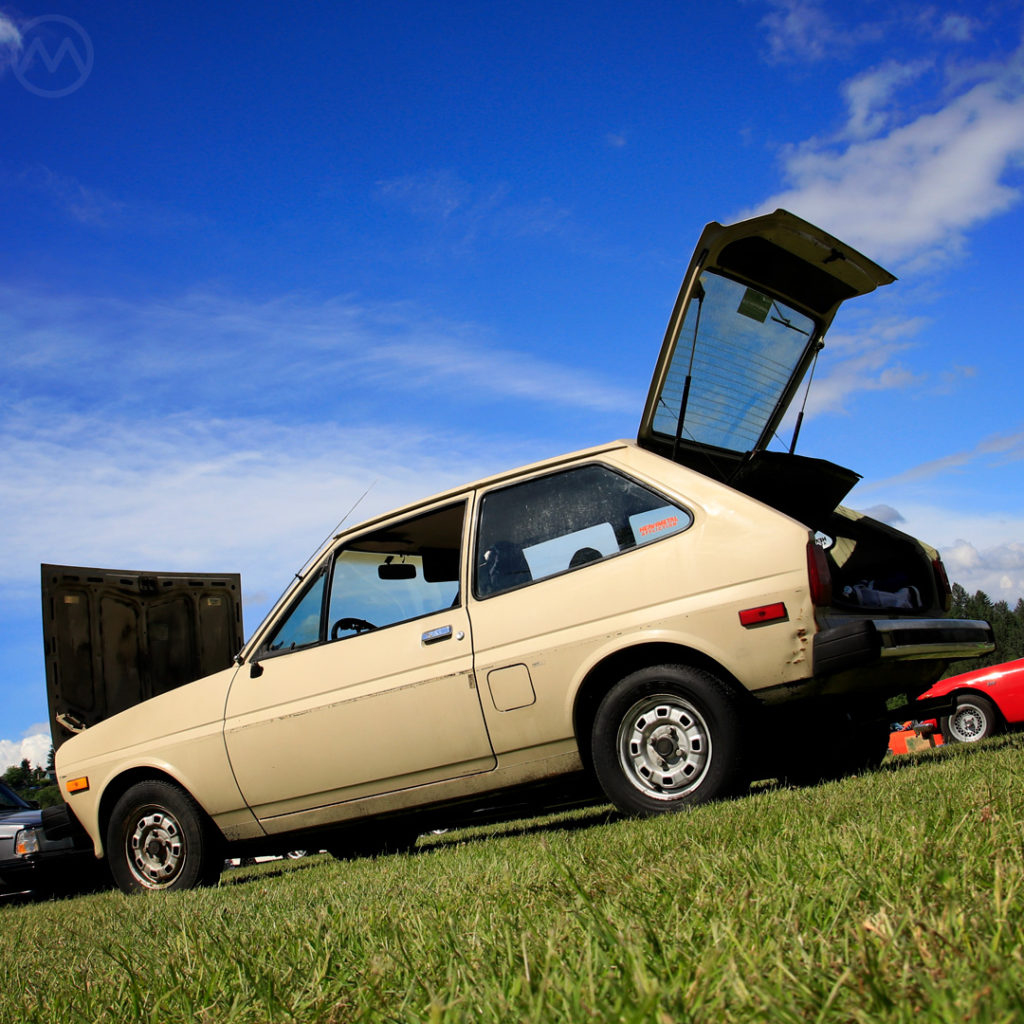
The car was an immediate hit in Europe. It took only two years and three months for Ford to hit the one millionth Fiesta built. The European range was not remarkable in terms of speed or performance at first, but it was exactly what the market wanted.
Unexpectedly, thanks to changes in North America, some of the Fiesta’s remarkable volume was headed to the United States.
Coming To America
The Fiesta may have been developed in part by execs in the United States, but it wasn’t ever meant to come stateside. Even its designers felt that it was too small for American tastes.
But on December 22nd, 1975, President Ford signed the bipartisan-passed Energy Policy and Conservation Act of 1975. Passed in the wake of the OPEC crisis, the bill had broad political support and established the Corporate Average Fuel Economy (CAFE) standard, which would take effect in 1978. Ford would need a lineup-wide average of 18mpg to avoid penalties and to offset its vast LTD (still its best-seller at the time) it would need to sell something smaller than the Pinto.
The original idea was not to import the Fiesta directly, because of limits on how much “imports” could count toward CAFE averages. Instead, Sperlich proposed building cars in North America, which would lower the costs and increase how much they counted towards the average. Local production would also allow Ford to tailor the car more to American tastes.
Sperlich also proposed teaming up with Honda to provide engines for the car, an idea the Japanese automaker was surprisingly amenable to.
There were two major strikes against this plan. One, it was expensive to tool up for a car already in production somewhere else; and two, HF II hated the Honda idea. Sperlich was dismissed in late 1976 for, among other things, pushing too hard on small cars and front-drive with HF II, to Ford’s eternal regret.
Instead, Ford would build the U.S. cars at Saarlouis and fit them with a larger engine that was better suited to American roads than the 957-cc or 1,117-cc Valencias. That engine was the 1.6L “crossflow” Kent, but no provision would be made for an automatic transmission.
Compared to the European Fiestas, the U.S. car was a hot rod in the mold of the later Fiesta XR2 (which also used the 1.6). It made only 66 hp in federalized form but it had much more speed than the 52-hp 1.1L Valencia, and more torque too. The XR2 is remembered as a fierce hot hatch in Europe, but to Americans, this car was a pure economy machine.
Dearborn had to scramble to get the car ready for the USA, and it did not appear until the summer of 1977. It also required some changes under the hood to fit the larger Kent. After all, the Fiesta had been designed specifically not to re-use it.
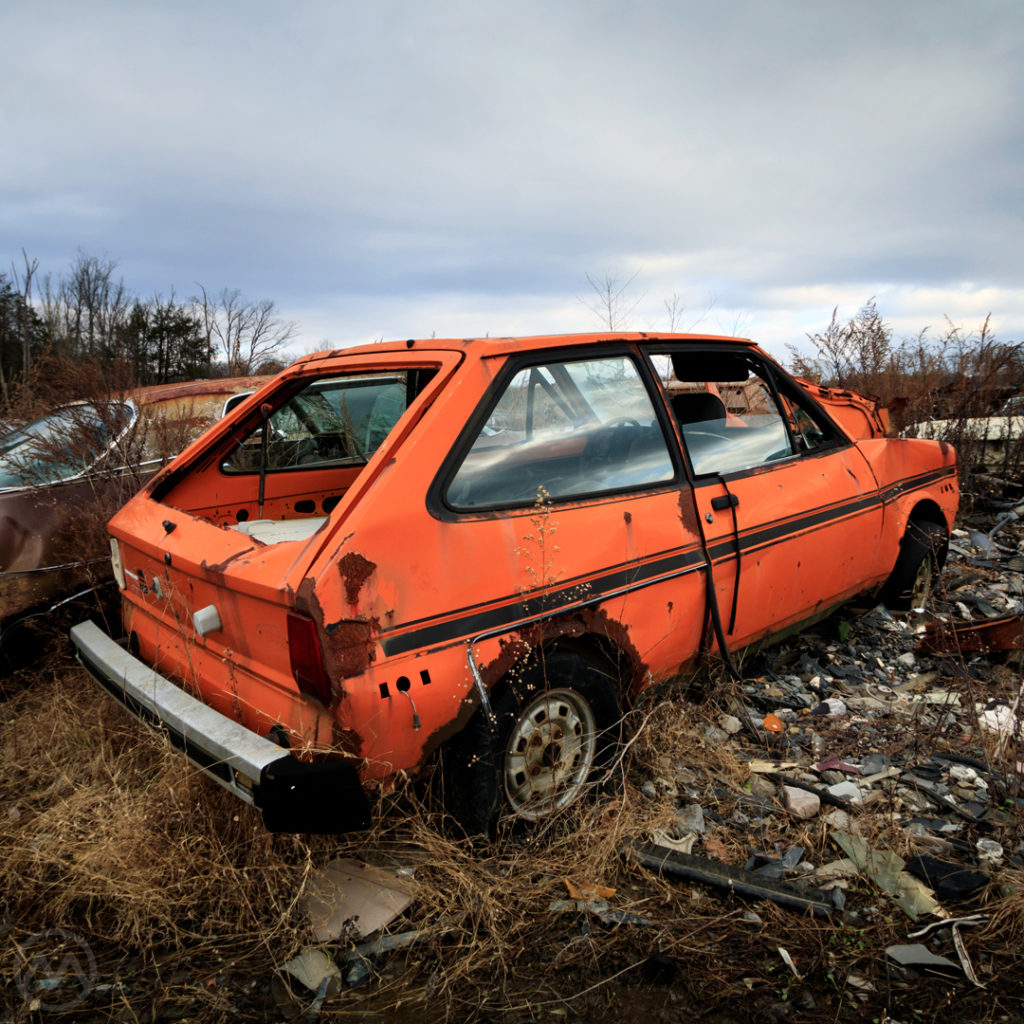
The Life of the Party
The Fiesta was warmly welcomed in the USA. It was a good handler and easy to tune, quickly earning praise from SCCA racers. Some buyers were familiar with the Kent from the era when it was sold in the U.S.-market Cortinas; but most were economy buyers looking for an economy car.
There were two interesting U.S. versions over the standard car, the vaguely more luxurious “Ghia” (it would not be considered luxurious today) and the “Sport.” The latter had beefed up suspension components and, sometimes, optional tape stripes.
In 1979, Ford Exhibited a hot 1600-powered, Donald and Geoff Healey-tuned “Healey Fiesta” in the U.S., one of the first hot hatches ever proposed for North America. It was the last Healey-badged car, but never made it to production.
The Fiesta compared well with the three-door VW Rabbit or the Chevrolet Chevette, and Ford moved more than 263,000 of the cars in North America from the summer of ‘77 until the fall of 1980. It was regarded as a fairly high-quality car for an economy machine, though rust was often a problem later in life; many Mk1 Fiestas were felled by tinworm.
The car was, of course, too small for U.S. tastes just as Sperlich had predicted, but it was a good stopgap and no doubt domestic Ford dealers were happy to have it in 1979-80 when fuel prices were high and big LTDs and Granadas went wanting for buyers.
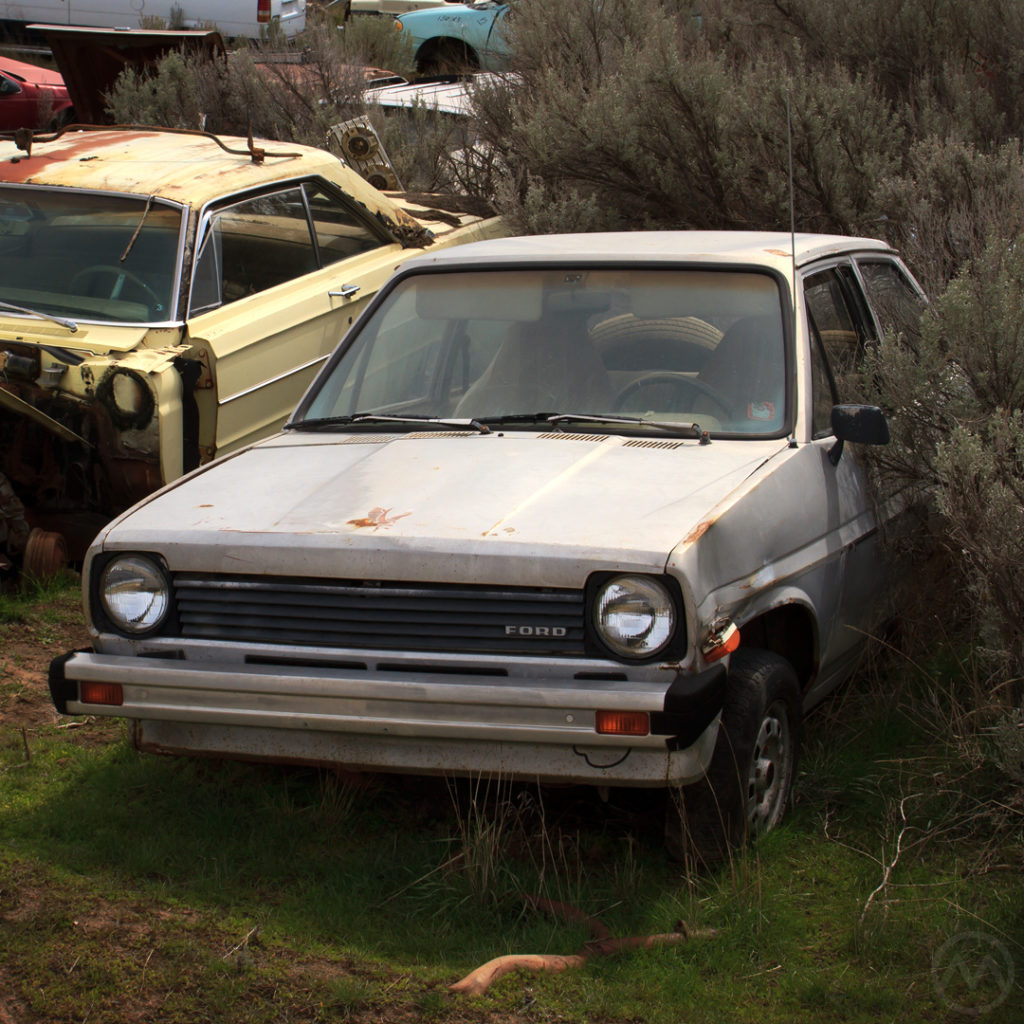
The success of the Fiesta project would inspire the Mk3 Escort, due in late 1980, and here Dearborn would build the internationally-developed project in America in a way similar to Sperlich’s abandoned Fiesta proposal. The U.S. Escort that emerged for 1981, however, was substantially changed (and not really for the better) from the Euro versions. With the arrival of this car, the Fiesta was dropped from the U.S. lineup. It simply wasn’t needed anymore.
In Europe, meanwhile, the engineering done to create the U.S. Fiesta was re-used in 1980 to offer a 1.3L “Kent” version of the car with a nice power bump. The 1.6 liter followed months later as the XR2, which became the most famous and desirable version of the original Euro Fiesta.
In 1983, long after the car had been dropped from the USA, the Mk1 Fiesta was facelifted into the closely related Mk2, which remained on sale until the spring of 1989. A series of quite good Fiestas generated huge amounts of profits for Ford’s international divisions thereafter, but none were imported to the USA until 2010, the result of yet another Fuel price spike.

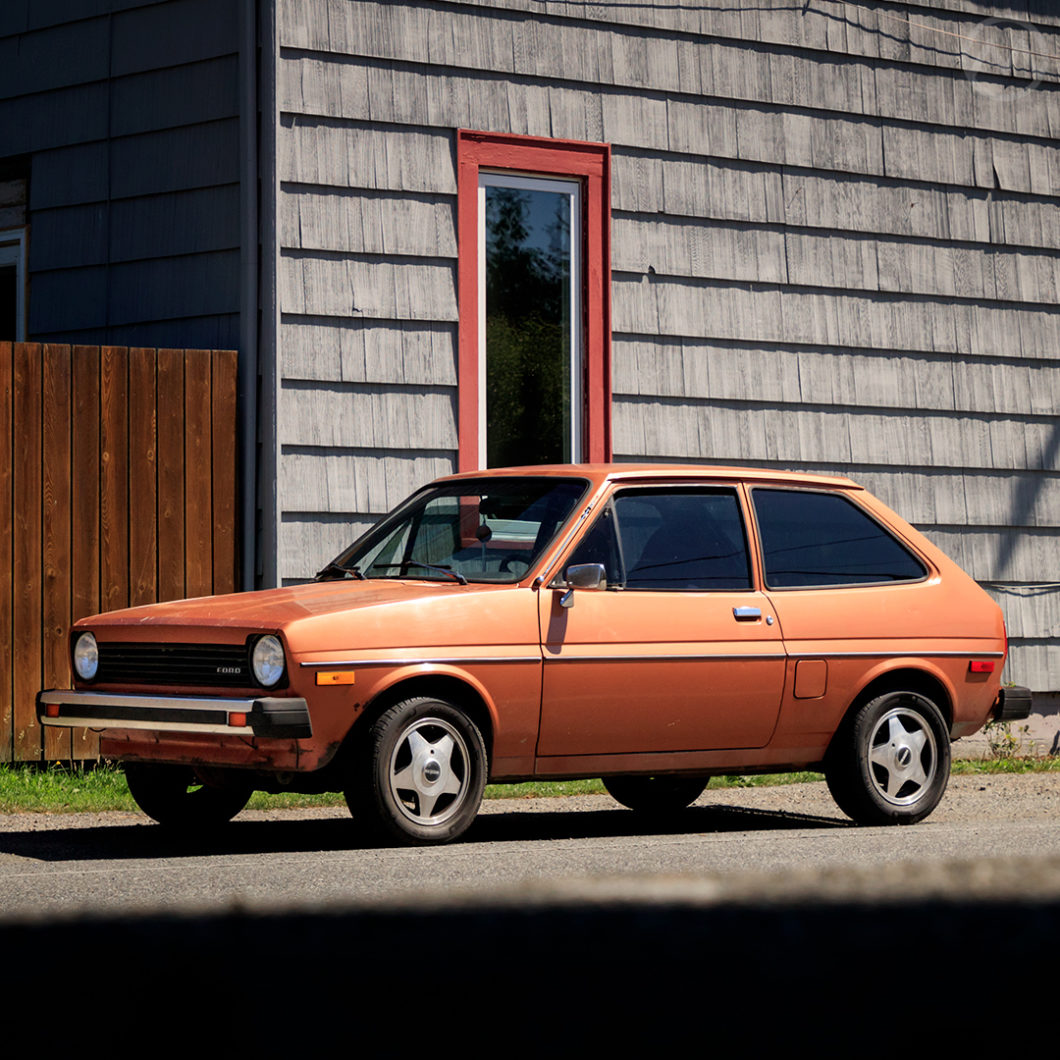
Pingback: Two For One! 1978 Ford Fiesta Sport | Barn Finds
I still have one! I own a clean, running and driving 1980 Fiesta, in M&M green! lol Love that little buggy, it’s fun, it’s peppy, and still gets 37 MPG! I would post a photo if I could!